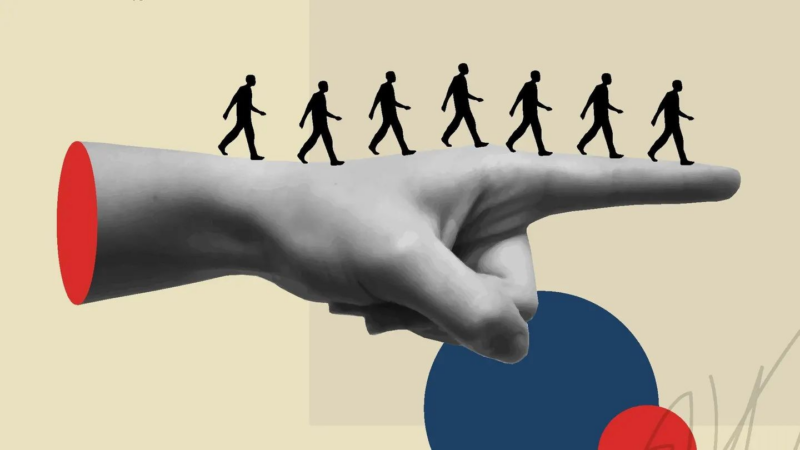Stable Leadership In Unstable Times: Part 2

As seen in:

In the first part of this series, we explored the shift from traditional top-down leadership to a more collaborative, collective model in the face of uncertainty. However, the question remains: how do CEOs take these initial steps toward shared leadership and translate them into sustainable, effective practices across their organizations?
In this article, we explore how CEOs can build trust, sustain collective leadership, and ensure alignment as they implement these changes across their organizations. Once the strategy-crafting process becomes more collaborative, how does a CEO maintain the momentum, embed this new way of working into the culture, and make it stick?
To explore these critical questions, I once again turn to the expertise of Brooke Struck, CEO of Converge. With extensive experience guiding organizations through similar transformations, he provides leaders with actionable insights for creating lasting impact through collective leadership.
Building Trust and Transparency
When CEOs embrace a more collaborative leadership model, one of the first obstacles is building trust, essential for open communication, honest feedback, and sharing unpopular opinions, within the leadership team.
Leading by Example
Once trust is established, the next challenge for a CEO is ensuring that collaborative leadership extends beyond the C-suite and permeates the entire organization. How can this shift be sustained, not just at the leadership table, but across all levels of the company?
Brooke Struck explains that a key responsibility of the CEO is to act as the beacon for this new way of working. “A big part of the CEO’s role is to be the beacon of this new approach, so thinking through how their interactions with other team members throughout the organization need to adapt.”
Essentially, the CEO must lead by example, modeling the behaviors they wish to see in others. This means consistently demonstrating openness, curiosity, and collaboration in every interaction.
However, a leader’s responsibility doesn’t stop with their own team. CEOs must ensure that the shift in leadership style is reflected across the entire executive team. If the leadership team does not embrace and model these new behaviors, it’s unlikely that the cultural shift will extend throughout the organization.
A practical way to reinforce this transformation is to make it clear to the leadership team how they must translate these practices down the chain. Struck underscores that this process is gradual and iterative.
“You need to make it clear to the other executives around the table that you expect them to take this new way of working and bring that down to the tables where they are leading their own teams,” says Struck.
By ensuring that the leadership team is aligned and accountable, the CEO sets the stage for the new way of working to take root across the organization.
Scaling Collective Leadership
As the collaborative leadership model is embraced by the executive team, how can it be extended throughout the organization?
A key lever for scaling this shift is embedding it into the company’s HR processes. Struck emphasizes that HR plays a vital role in instilling collective leadership throughout the entire employee journey, from onboarding to offboarding, ensuring it becomes ingrained in the organizational culture.
This might involve revising the hiring process to assess candidates for their ability to collaborate, or rethinking performance reviews to emphasize teamwork and shared ownership.
“I’ve even seen an organization get spectacular results by treating their candidate interview process as an opportunity for joint learning, using the interview to identify risks, define success conditions and needed supports,” says Struck.
By treating the hiring process as an opportunity to explore collaborative potential, companies can make sure that the people they bring into the organization are aligned with the culture they’re trying to build.
Dealing with Pushback
And yet, even in the most collaborative environments, conflict and disagreement are inevitable. Leaders from all levels will likely encounter moments of resistance or dissent as they transition to a more collaborative strategy process.
Struck identifies two significant shifts that CEOs must make when embracing a more collective leadership model.
“The first is letting go of the idea that they need to be the visionary,” says Struck. This adjustment can be challenging for many leaders, particularly those who have built their careers as the ones with the plan. However, they must recognize the value they bring in their new role and embrace the shift in their contributions.
“The second is developing new reflexes for how they respond to dissenting voices, apparent pushback, etc. — where they’re so used to ‘arguing the point into submission’ instead of seeing it as just one more signal to integrate into an evolving picture,” he continues.
When leaders welcome dissent as a chance to learn instead of shutting it down, they not only make better decisions but also strengthen the trust and camaraderie within their teams.
It’s a shift that demands vulnerability and openness—qualities that many leaders might initially find uncomfortable. But embracing this discomfort is the key to creating a culture where collaboration thrives and teams are empowered to speak up, innovate, and grow.
“Leaders can clarify the process for how they intend to make a decision: rather than trying to insulate themselves from influence, they can basically hand people a roadmap that says: ‘Here’s how I want to be influenced’,” says Struck.
In fact, by giving teams a clear framework for how their input will be integrated into the decision-making process, leaders open the door to richer, more constructive conversations, making it easier for teams to engage, challenge ideas, and contribute meaningfully to the decision-making process. This is how a culture of shared ownership and continuous learning takes root.
Knowing When to Change
As with any transformation, the key to success is knowing when to start and how to sustain momentum. Struck advises CEOs to identify the “red lines” that will signal when the organization has reached a tipping point.
“Change is hard. It has to be better than the alternative. So, you’re ready for transformation—strategic and cultural—when you believe that the status quo is no longer viable, that the trajectory you’re on leads somewhere that you won’t accept,” he says.
Once the moment for change has been identified, immediate action should be taken, says Struck.
“The first right move is to stay true to your earlier commitment: when you see those red lines being crossed that you’d previously articulated, don’t redraw the lines.”
Instead, bring your leadership team together, show them the evidence you’re working with, and ask for their honest assessment. This process of collective reflection is a powerful way to model the behavior that you want to see at all levels of the organization.
In conclusion, building a culture of trust, collaboration, and shared decision-making is no easy task, but it’s an essential step toward thriving in today’s volatile, uncertain, complex, and ambiguous world. By building trust, embracing dissent, and embedding collaborative practices throughout the organization, CEOs can create a resilient, adaptive leadership model that empowers teams to tackle whatever comes next.
Note: This is the second article in a two-part series with Brooke Struck, CEO of Converge, on cultivating stable leadership in unstable times. To explore the foundation for this leadership evolution, read the first part of this series.
Leave A Comment